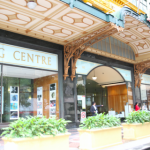Controlling Youth Crime: Victorian Summit May Lead to Results

Crime and youth experts have attended a Victoria Police Summit aimed at addressing issue of youth violence.
The Summit was held in response to a spike in property and violent crimes – including car jackings, burglaries and larceny offences – with police struggling to control a small group of repeat offenders.
Youth Crime
Speaking at the Summit, Victoria Police Commissioner Graham Ashton said he was particularly about the increasingly violent nature of crimes.
Research suggests that youth crime has increased by 7.6% in Victoria, up to 20,380 per year after several years of decline. As to reoffending rate, 13% of youth offenders were involved in five or more crimes within the previous year, and a total of 687 children aged between 10 and 17 had been arrested 11 or more times.
Mr Ashton says police are having trouble containing several groups of “vigilante” youths, which according to him are causing havoc across Melbourne’s western suburbs.
Risk Factors
The forum is looking at ways to deal with risk factors associated with offending, including substance abuse, mental health issues and lack of employment opportunities.
Ashton says the event was about stopping the cycle of crime:
“We’re probably destined to keep… [arresting the same offenders] unless we work out what are the causal factors that are driving it in order to prevent it,” he said.
Ashton believes youth unemployment, obstacles to securing government benefits and a lack of optimism for the future are all contributing to the lure of crime:
“One offender said it was easier to sell drugs than it was to negotiate Centrelink,” he noted.
He quoted another offender as saying, “What is the point of dreaming of getting a good job one day when you can’t even get a job at the local supermarket?”.
Government Approach
Victorian Premier Daniel Andrews appears to be warming to the idea that youth crime cannot be solved by simply “wielding a big stick”:
“An incarceration-only approach is simply an apprenticeship to a life of crime,” Mr Andrews acknowledged. “It costs a lot and it’s not a smart investment.”
He pledged to continue investing in TAFE and other education institutions to give young people a sense of optimism for the future.
The Commissioner for Children and Young People, Liana Buchanan, undertook to review the state’s tough position on youth bail:
“What we know is that locking kids up generally doesn’t work in the long term,” she said.
“Generally it increases the likelihood they’ll reoffend.”
Flinders University Professor Mark Halsey, who recently completed a 10-year prison study, highlighted what we already know – that imprisonment is counterproductive to rehabilitation and only solidifies the cycle of crime. He believes mentoring is an important way of breaking the youth crime cycle – proposing a program whereby former gang members and those who have served time take young people under their wing and teach them the error of their ways, as well as what they can achieve if they put their minds to it.
Mr Halsey highlights the link between a dysfunctional home environment and offending, saying that some children are drawn to criminal groups due to a yearning for recognition:
“It’s internalised hurt, confusion, shame, [and] alienation being manifested as externalised violence and mayhem on the streets,” he said, adding that many children join gangs for a “sense of belonging and identity”.
Many hope these recommendations for reform will be acted upon by the Victorian state government and beyond.






